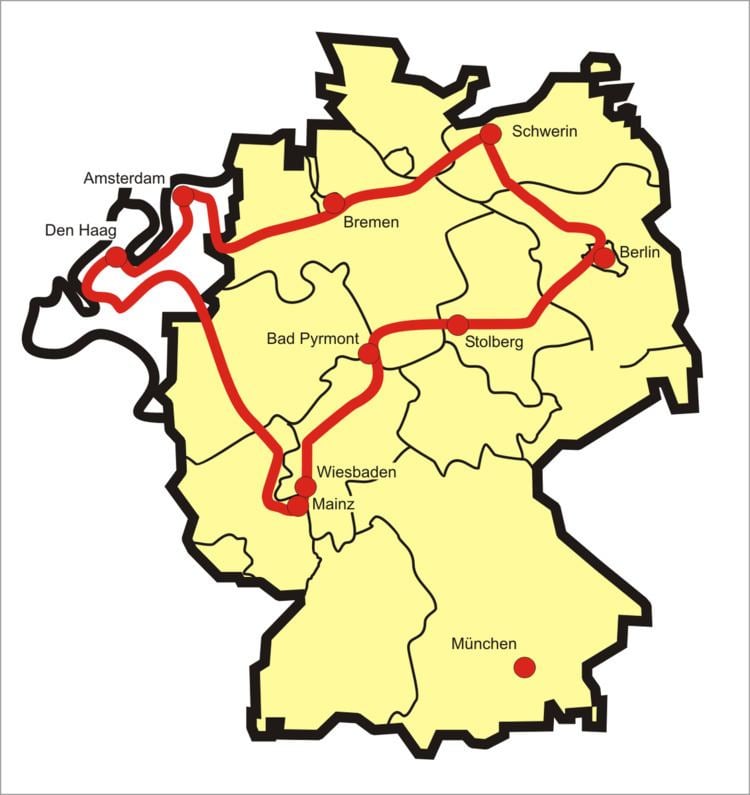Length 2,400 km | ||
 | ||
Flame orange route amsterdam rotterdam
The Orange Route (Dutch: Oranje-Route, German: Oranier-Route) is a holiday route, that runs from Amsterdam in the Netherlands through North and Central Germany and returns to Amsterdam. It is 2,400 kilometres long and crosses the Netherlands and nine German federal states. The Orange Route runs through towns and regions that linked the House of Orange-Nassau for centuries.
Contents
States
The Orange Route runs from the Netherlands initially through the states of North Rhine-Westphalia, Rhineland-Palatinate and Hesse, first in a southerly, then in a northeasterly direction in order to head for Lower Saxony, Saxony-Anhalt, Brandenburg and Berlin. From there it heads northwest through Mecklenburg-Vorpommern and then turns westwards through Schleswig-Holstein, Bremen and Lower Saxony once again along the North Sea Coast near Amsterdam.
Landscapes
The holiday route crosses a great variety of different landscape types: the North Sea coast and the plains of the Netherlands, the Lower and Middle Rhine Valley, the green, sometimes rugged, sometimes gently Central Uplands, the Havelland, the Mecklenburg Lake District and finally the broad North German Plain. In detail, the regions are, starting from Amsterdam:
Sights
Picturesque towns, castles, palaces and gardens may be found everywhere along this holiday road. Here are some of the places and sights that were linked to the House of Orange-Nassau:
